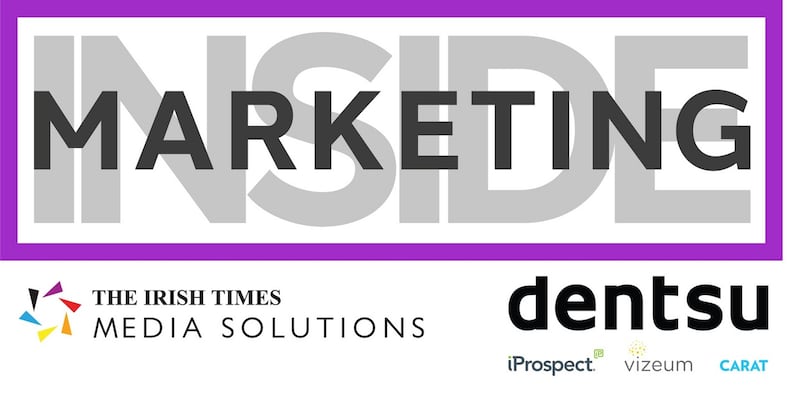In 1985, Wire & Plastic Products, a British company primarily specialising in the manufacturing of shopping baskets, received a 16 per cent investment from a private investor. The investor, Martin Sorrell, subsequently joined the company full time as CEO in 1986, heralding the start of an all-conquering acquisition strategy that would see Wire & Plastic Products (renamed WPP) transformed into the largest agency holding group in the world.
Sorrell became “Sir” in 2000 and during the height of his stewardship, WPP was valued at over £20 billion. He left the group in April 2018, after 33 years at the helm, amid some controversy but as a good leaver.
After all his accomplishments, and given that he was 73 years old at the time of his departure, one might assume he would sail off into the sunset to enjoy the spoils of his empire-building career, or at least taken an easier role as CEO at an already established business. But Sir Martin Sorrell has never been one to disappear quietly, so it came as no surprise to those who know him when he resurfaced in May 2018 at the helm of a new agency venture, S4 Capital. And so, history begins to repeat itself as S4 Capital embarks on a period of rapid growth, fuelled by mergers and acquisition, because as Sorrell says, “I don’t have time for slow growth”.
This week on Inside Marketing, I spoke to Sorrell to get his take on the agency landscape and his new venture. S4 Capital has been making the news headlines recently for delayed financial results, which saw its share price drop. At the time of writing this article, the share price has shown signs of recovery and while its mid-April valuation ($2.4 billion) is a long way off its $4.8 billion September 2021 valuation, the model is very interesting, and gaining lots of traction.
[ irishtimes.com/inside marketingOpens in new window ]
[ Inside MarketingOpens in new window ]
·
[ Ep. 70 - Sir Martin SorrellOpens in new window ]
During these turbulent times, I fully expected the interview would be cancelled. I can only imagine that the last thing Sorrell needed was a discussion about marketing amidst a flurry of investor and city analyst calls, but it went ahead as planned and without any suggestion that the allocated hour needed to be shortened.
And so, we spoke of marketing. One of the trends that has occurred over the past 25 years is that agencies are increasingly run by finance people. There is nothing wrong with that, except the inference is that these bête noire characters we have created do not fully understand a creative industry like advertising, that they see advertising as a cost rather than an investment.
Given Sorrell’s background as CFO in Saatchi & Saatchi, I wanted to start there. “I think it’s a snobbish view of creativity, it harps back to the past, the Don Draper and Mad Men era seeing the world through rose-tinted spectacles, but life has moved on. Data is often lauded as the death of creativity, but I find that utterly ridiculous. Lots of people and professions are creative.
“It is outrageous for somebody to say nobody else is creative except those who ascribe to their definition of ‘creative’. It’s left brain and right brain, it’s not all about the art, it’s about science too, and what has happened over the last 25 years with the growth of the Internet is that the science has become more and more important. To say that finance people do not have any creativity, or the reverse, that creative people don’t have any numerical discipline, is simply wrong.”
Different model
I asked Sorrell about the S4 Capital model and how it’s different to that of a holding group such as WPP; “our model is different to the classic earnout model as it is cash plus shares. The problem with the earnout structure is it goes back to the 1950s, to Marion Harper and IPG, back to the time where you had separate brands to manage client conflict, but as fees were driven down by procurement, the issue of client conflict and the need for separation through agency brands has been somewhat relaxed.
“The earnout model maintains that separation and subsequently hinders integration. We take integration extremely seriously. We treat the company as one P&L, we are not driven by conflict, and we don’t have our people operating in silos. If you retain the individual brands, then you cannot create a single entity because you are going to have different people concerned about their specific part within the organisation rather than the organisation itself.”
That debate about whether the industry has a seat at the top table was there when I was in Saatchi's and WPP
I asked whether advertising still has the same importance today in business, and whether agencies have the same type of CEO relationships as we used to.

“That debate about whether the industry has a seat at the top table was there when I was in Saatchi’s and WPP. It may be that personalities in those days were different, it’s a little bit of the rose-tinted spectacles creeping in again, but maybe it was more personality-driven back then and it has become more committee-like today from agency point of view, less colourful. But I still think agencies have seats at the top table.”
Sorrell sees S4 Capital as an agency group built for the future and one that is very different to the legacy structures of the traditional holding company: “We are unapologetically focused on where the growth is (digital), the old creative agencies (JWT, Y&R, Grey etc.) were stripped, media was taken out, digital was taken out. These services became separated because you want them to grow faster, but what you have left is an analogue creative core and therefore not growing as quickly in a digital world.
“The media agencies are strong because the media agencies are digital as well as non-digital, they have not been stripped back like the creative agencies have. My view on the holding companies is that the only way they prosper in the future is if they are broken up. If WPP was broken up, I am sure its market value would be far greater than its current valuation. Of course, if they can bring it all together under a single P&L it would make more sense, but that is not how they are set up and if that is not an option. They would be stronger if broken up.”
Spooked investors
During our interview we talked about in-housing, talent retention and what makes the S4 Capital model different to the holding company model. At the time of writing, PwC has yet to sign off on S4 Capital’s financial results and while that is not any evidence of trouble itself, the lack of clarity has clearly spooked some investors who believe it is better to sell now than wait for an explanation.
The adage, “it’s not the size of the dog in the fight, it’s the size of the fight in the dog” comes to mind when you think of Sorrell: you know he has been through these types of crises before, he has thrived, not just survived, and he will go through them again. You cannot help but get the sense that he rather enjoys the thrill of troubled waters, that he thrives on the “us against the world” mantra and that maybe, deep down, he is more comfortable with combat than cheerleading.
Dave Winterlich is chief strategy officer, dentsu, Ireland











